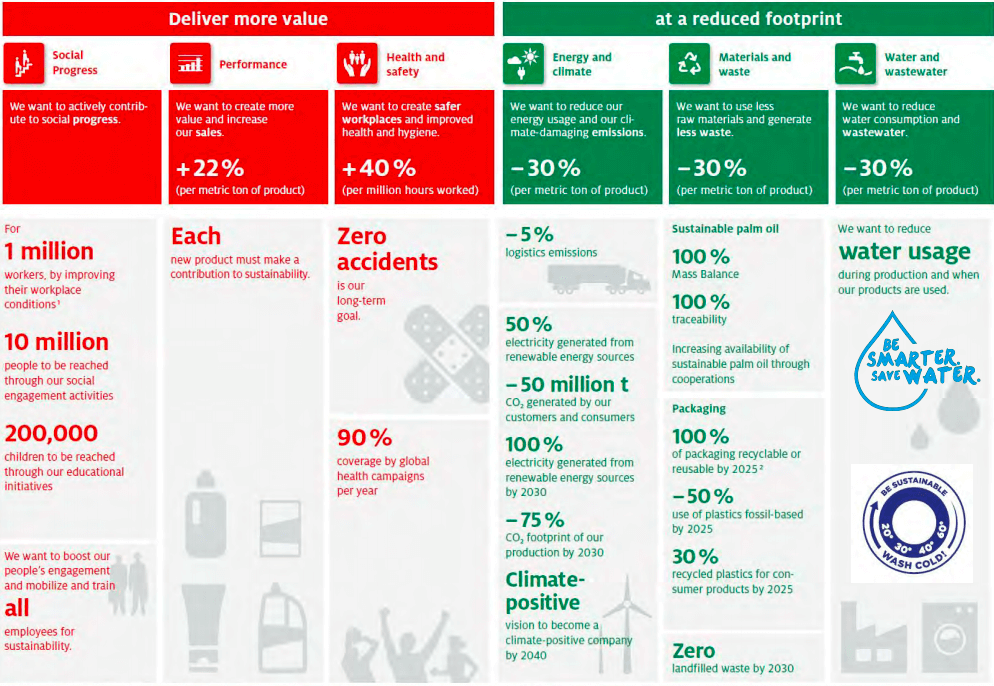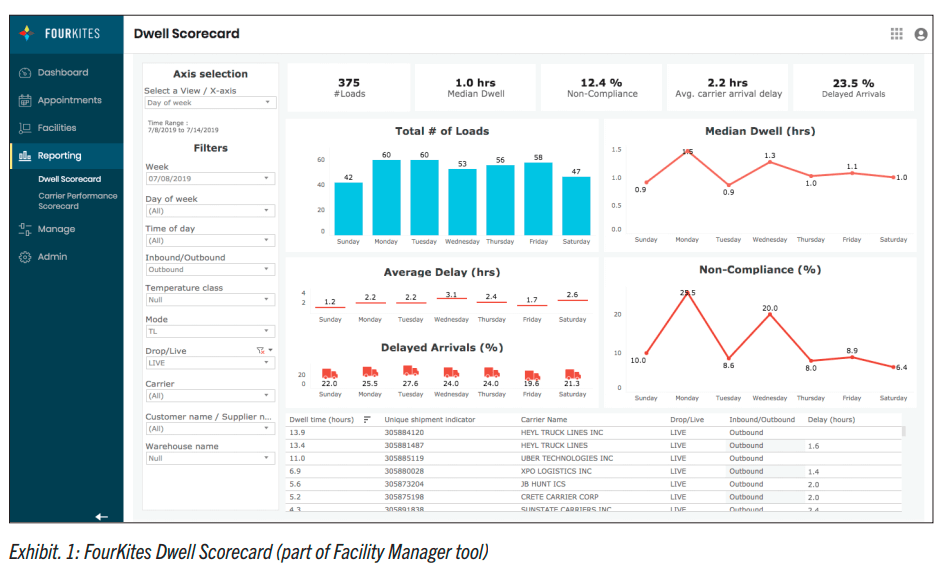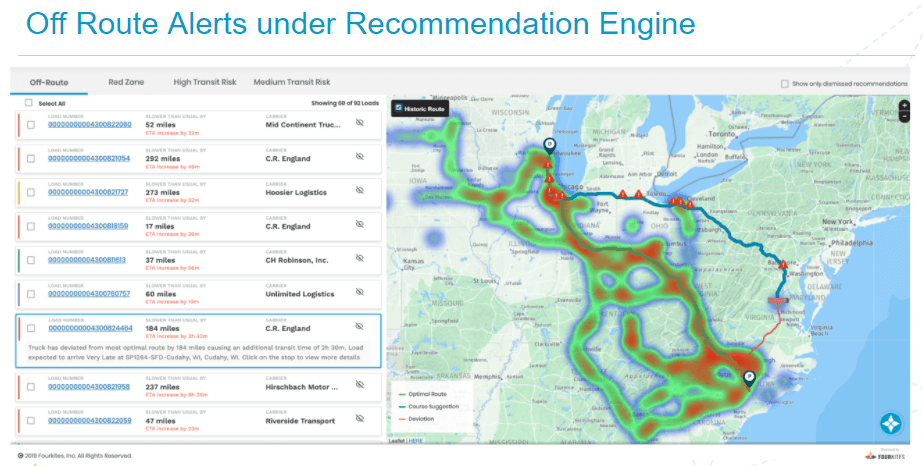Supply Chain Sustainability
The Definitive Guide to Social, Economic, and Environmental Sustainability Practice
The Definitive Guide to Social, Economic, and Environmental Sustainability Practice
This comprehensive guide explores the meaning of a sustainable supply chain. We’ll cover the practices, technology and metrics today’s top companies use to create sustainability programs to address the current and future environmental impact of the global supply chain.
According to the UN Global Compact and Business for Social Responsibility, supply chain sustainability is the “management of environmental, social and economic impacts, and the encouragement of good governance practices, throughout the life cycles of goods and services.”
Sustainable supply chain management is vast and multi-faceted. It addresses specific functions of the supply chain process, such as:
The year 2020 was one of the hottest years on Earth, tying with 2016 since record-keeping began in 1880. Rising temperatures, shown in the NASA image, cause imbalanced ecosystems, leading to extreme weather conditions that threaten resources and human safety. Known as climate change, 11,000 climate scientists call it a climate emergency.
Climate change threatens humanity, and the answer is sustainability. By implementing sustainable practices in the supply chain we can meet current generations’ needs without compromising the needs of future generations.
Examples of activities that contribute to temperatures higher than any point in the past 800,000 years include:
McKinsey reports businesses supporting these activities have a 90% environmental impact within the supply chain. Sustainable practices in supply chain management are becoming increasingly important in order to offset the environmental impact of increasingly large and complex global supply chain networks.
Half of U.S. greenhouse gas (GHG) emissions, of which CO₂ accounts for 80%, stem from transportation (28.2%) and heavy industry (22%).
Transportation is the largest source of greenhouse emissions in the U.S. , accounting for a third of all greenhouse gas emissions, with road freight accounting for 74% of all transportation-related emissions. Current supply chain projections call for an increase in truck transportation. By 2045, it will move 60% of the $37 trillion freight value.
Implementing sustainable practices in the supply chain, including transportation, is crucial. As leading emissions offenders, companies must build sustainable supply chains that optimize efficiencies and minimize waste, from procurement to final delivery.
The supply chain is a huge contributor to environmental pollution, waste and inefficiency, but companies now have an opportunity to change that.
– Mathew Elenjickal, FourKites CEO
Sustainability has been a growing priority for companies and consumers alike. Since the ’60s, Americans shifted their attention from post-war recovery toward environmental concerns. With the COVID-19 pandemic, the supply chain moved to center stage. Empty shelves emphasized the global supply chain fragility. It shined a spotlight on products’ sourcing, processing and distribution. COVID-19 has challenged businesses to build mechanisms for resilience and efficiency throughout the supply chain.
Supply chain sustainability challenges will compound as the effects of climate change worsen. Take, for example, coffee production. The world’s top coffee producers (Brazil, Colombia and Honduras) face potential hurricanes and drought. By 2050, climate change could decrease coffee-growing resources and other crops by 50%.
The 2019 Midwest flooding disaster impacted crops, trucking and barge facilities, totaling billions in losses. This event is another example of why building sustainability in supply chain logistics is needed. Companies with agile logistics operations can react to events like these.
The global investment community wants sustainable supply chains, too. A Nielsen survey shows 73% of consumers will change their consumption habits to reduce their environmental impact. Investors like BlackRock, the world’s largest asset manager, are taking heed. Sustainability is a top 2021 priority. BlackRock says it will look to see how companies rebuild their businesses for long-term sustainability.
More Resources: Unlocking Network-wide Sustainability with Technology
These examples show that building sustainable supply chains isn’t limited to one single company or entity. Sustainability practices must encompass the full range of partners, suppliers, and facilities.
Here are examples of a few companies’ supply chain sustainability initiatives:
According to Frances Edmonds, Head of Sustainable Impact, HP Canada, when HP disclosed its carbon footprint, it provided a startling realization. Edmonds spoke at FourKites’ recent Supply Chain Leadership Summit – Major Initiatives for 2021.
“There’s not a lot of transparency on the impacts of supply chains. However, HP has been a leader in this space,” said Edmonds. HP’s 50,000+ employees account for 1% of its total carbon footprint. Yet, 50% of the company’s carbon footprint is the supply chain.
HP uses a common framework provided by the Global Logistics Emissions Council (GLEC). The simple act of measuring numbers is often a critical first step to tackling them throughout the business, says Edmonds.
One strategy Edmonds says is the fastest way to green your business is to purchase from one that’s already green. All HP North America shipments use SmartWay-approved carriers. The SmartWay program, designed by the EPA, employs anti-idling policies and low-friction tires to reduce emissions.
Walmart Canada’s Vice President of Transportation Francis Lalonde spoke on its Scope 3 initiative at the summit. The company’s Scope 3 initiative eliminates one billion metric tons of GHG emissions from the company’s supply chain by 2030.
Walmart Canada targets emissions that originate outside of the company. It focuses on suppliers, manufacturers and transportation partners. Mastering Scope 3 requires convincing partners to place a priority on emissions levels.
We’re at the point where we’ve cranked up our orders from 40 to 130 Tesla trucks. It’s one of the largest orders in the world. We’re on a journey to be alternately powered by 2028 within the Canadian business. Our first trucks are scheduled to arrive by early next year, so we really want to be ready for that.
– Frances Lalonde, Vice President of Transportation, Walmart Canada
Henkel, a German consumer goods company with 53,000 employees, worked on efficiency strategies as early as 1903. The company innovated a water-soluble powder shampoo to minimize waste. Henkel’s vision is to be climate-positive by 2040. It promotes supply chain sustainability policies to reach that goal.

I recommend that companies who want to take this topic seriously start at the top with dedicated resources, and then trickle this commitment down throughout the organization.
– Dr. Dirk Holbach, Corporate Senior Vice President and CSCO Laundry & Home Care, Managing Director HGSC B.V. at Henkel
Pinpointing the best sustainability practices in the supply chain can be challenging. No single sustainability model fits all companies’ needs. Some companies take a top-down approach to improve sustainability across the entire organization. Then, they cascade plans to specific business functions. Others take a bottom-up approach by building sustainability plans within core functions. These plans roll up into an overarching corporate sustainability plan that includes the supply chain.
The majority of publicly held companies have responded to shareholder desires. They have implemented sustainability offices and sustainability plans for the past 20 years or more. However, just 39% of private businesses surveyed can meet the 2030 UN Sustainable Development Goals (SDGs).
Industry associations and governmental programs can be good resources for sustainability tools. Another resource is the Sustainability Center of Excellence. This thought leadership council promotes sustainability throughout the end-to-end supply chain. It also helps provide the tools needed to make changes toward lasting supply chain sustainability.
Many companies use industry-specific frameworks to uncover blind spots between the sustainability office and the supply chain. GLEC is one common framework for sustainable logistics and supply chain. It rolls up into other standardized frameworks that measure and report overall sustainability.
GLEC’s goal is to account for all relevant logistics emissions within a company’s supply chain. Emissions fall into three categories. These follow the principles of accounting by the Greenhouse Gas Protocol, shown in the image above.
GLEC and other standards like the Carbon Disclosure Project (CDP) provide a baseline for environmental reporting. These reports include a common language for the supply chain. Also offered are certification declaration and other measurement criteria. Almost 10,000 companies globally and 65% of S&P 500 respond to CDP disclosure requests.
The potential of companies to drive emissions reductions at a global scale by engaging their supply chains is immense — and substantially unexploited. It is essential to scale up corporate action to meet global climate change targets, to address deforestation and to ensure water security for all.
– Sonya Bhonsle, Global Head of Supply Chains, CDP
Supply chain sustainability framework and reporting standardization are maturing. Organizations have developed strategies and methodologies to address supply chain carbon footprint concerns. Most of these initiatives are voluntary. As environmental impacts escalate, some are becoming mandatory. One of these is the Task Force on Climate-related Financial Disclosures (TCFD).
Another common practice is Corporate Social Responsibility (CSR). The CSR concept maintains that businesses have a social responsibility to the public and society’s needs. Wells Fargo, Coca-Cola and Walt Disney embraced CSR early on as a strategic part of their business processes.
The investment community uses the Environmental, Social and Governance (ESG) framework. ESG helps investors make funding decisions based on a company’s sustainability performance.
What is the difference between CSR and ESG?
Both support or integrate with other frameworks to standardize to a common language for all stakeholders.
S&P 500 annual reports have mentioned “supply chain” 30% more in the past five years. Fifty of these companies describe their supply chains as complex. The image below shows S&P 500 frameworks and reporting standards used to include sustainability.
Transportation, one of the greatest contributors to GHG emissions, is becoming easier to measure. Supply chain technologies can predict and prescribe logistics and distribution strategies that prioritize sustainability in supply chain management. These can show the related carbon footprint of actions taken.
Globally, overall CO₂ emissions declined 8.8% in the first half of 2020 over the same period in 2019. The pandemic contributed to the decrease.
Despite the good news in declining CO₂ emissions, both the European Union (EU ) and the U.S. transportation emissions forecast freight transport emissions will more than double by 2050. This projection necessitates companies to take action. Amazon, for example, has pledged to go carbon-neutral by 2040 and plans to deploy 100,000 electric delivery vans by 2024.
Supply chain transportation numbers in CO₂ emissions show:
As other sectors decrease their reliance on oil and gas, the fossil fuel-dependent transport sector is predicted to become the most carbon-intensive sector by 2040. Without intervention, freight transport emissions will more than double by 2050.
– GLEC for Logistics Emissions Accounting and Reporting Version 2.0
Additional Resources:
Real-time supply chain visibility technologies can help companies track emissions reductions and minimize GHG emissions by reducing empty miles, dwell times and waste. These technologies contribute to sustainable supply chain finance by creating cost-saving efficiencies, too.
The FourKites’ Sustainability Dashboard identifies specific areas within the supply chain that contribute to high greenhouse gas emissions levels.
The FourKites Sustainability Dashboard, for example, gives companies a single, central source of truth. It identifies specific areas within the supply chain that contribute to high greenhouse gas emissions levels.
Our new Sustainability Dashboard – fueled by real-time logistics data from the FourKites platform – is a powerful solution that will help our network achieve their sustainability objectives while simultaneously reducing operating costs and gaining additional business efficiencies.
– Matt Elenjickal, Founder and CEO, FourKites
The FourKites platform supports supply chain sustainability initiatives by helping reduce unnecessary miles driven. It optimizes opportunities to work with partners across lanes and carriers. These may include minimized deadheads and collaborative shared backhauls.
FourKites’ Sustainability Dashboard provides customers with insight into:
Land O’Lakes used FourKites Lane Connect to share capacity with a grocery wholesaler’s private fleet to combine backhauls. The result was a total transportation cost-savings of 20%–25%. It also reduced the wholesaler’s empty hauls by 502 miles per trip, twice a week.
Lane Connect is giving us the invaluable ability to collaborate with other grocery manufacturers and food retailers who share common lanes. That translates into higher utilization and better cost management, and helps ensure that we’re collaborating with carriers to keep trucks moving.
– Yone Dewberry, Chief Supply Chain Officer, Land O’Lakes
Industry leaders such as HP, Walmart Canada, Henkel, Coca-Cola, Land O’Lakes, Giant Eagle and Wegmans are examples of companies leveraging real-time visibility to support and measure supply chain sustainability practices.
Additional Resources:
Like empty miles, dwell time is a significant contributor to unnecessary GHG emissions. Heavy-duty and light-duty vehicles’ idling wastes about 6 billion gallons of fuel each year. This idling equates to 11.5 million passenger vehicles driven for an entire year.

Another emissions offender is long detentions. These cause missed appointment times. Detentions create lost opportunities of one or more loads per month for 80% of carriers in the United States. Being able to manage appointment times ensures the usage of only the required assets.
How can companies manage other supply chain dynamics? In 2019, FourKites joined forces with the Trading Partner Alliance (TPA), along with major shippers and transportation partners. Participants in the joint pilot study reduced the miles driven by empty trucks between 3% and 7%. This reduction was through improved utilization of both private and dedicated fleets.
The best real-time transportation visibility technologies facilitate proactive planning. Access to predictive ETAs of in-transit loads provides efficient planning at the yard and facility. Unused assets aren’t taking up space and burning fuel. On-site labor more effectively allocated saves the consignee time and money as well.

In addition to Lane Connect shrinking empty miles, Land O’Lakes drew on FourKites’ real-time visibility platform. The platform predicts arrival times for more than 200,000 shipments per year with accuracy. It also represents between 90% and 95% of its total loads.
Planning for the future requires having an up-to-date understanding of current trends in supply chain sustainability. It’s also the ability to predict future developments accurately. Eco-friendly technologies such as electric vehicles will become more common in the coming years. The industrial supply chain is no exception.
View the videos from the Virtual Summit on The Future of Supply Chain Sustainability
Medium- and heavy-duty trucks account for 8% of the U.S.’s GHG emissions. California requires all new medium and heavy-duty trucks to be 100% zero-emission vehicles by 2045. This mandate helps put an estimated 54,000 electric trucks on the road by 2025. About 2,000 electric trucks that can travel up to a 300-mile radius exist today. It’s easy to see how the dynamics of fleet changes will impact logistics with new constraints to consider.
Consumer buying behavior continues to change, too. Consumers are more environmentally conscious about their individual carbon footprint. Many businesses are getting creative in delivering purpose-driven brands. Seven in 10 consumers are willing to pay a premium for environmentally responsible brands.
A few examples of how corporations are extending sustainability awareness:
New technologies, such as IoT and AI, are the future of sustainable supply chain technology. These assist with implementing long-term and successful practices. Companies like FarmGrow, a social enterprise, support global farmers in major cocoa-producing areas. Farmers learn to optimize yields without adverse effects on the environment. FarmGrow employs remote-sensing technologies (satellite imagery, AI) to track production. Alerts note sustainability risks like deforestation.
Karma, a Swedish startup, focuses on sustainability in the food supply chain. It allows retailers to sell surplus food to consumers at half-price instead of throwing food away. In the U.S., for example, food waste is estimated at between 30–40% of the food supply.
The future of sustainable practices in supply chain management will see companies taking sustainability goals directly to consumers who want to align their purpose/value-driven demands.